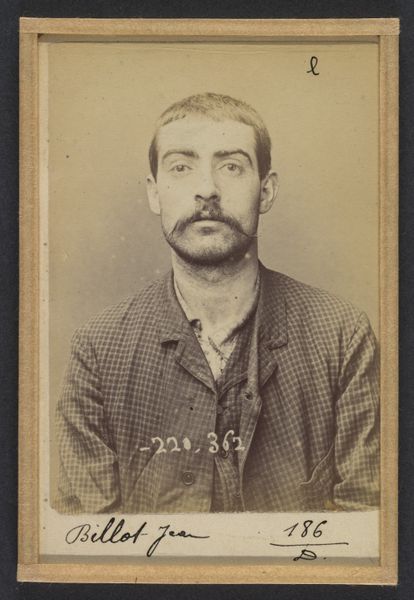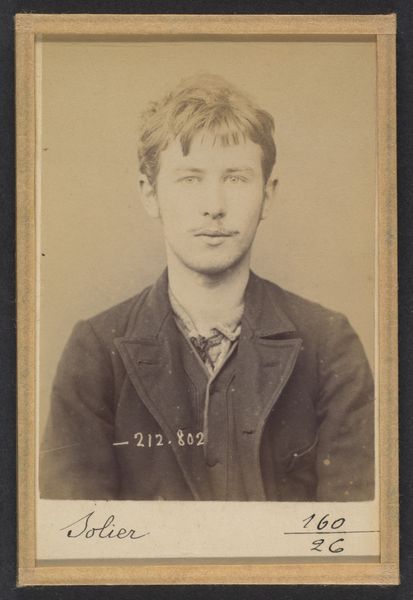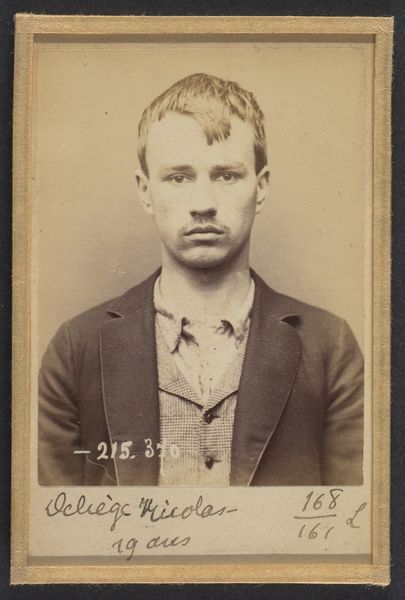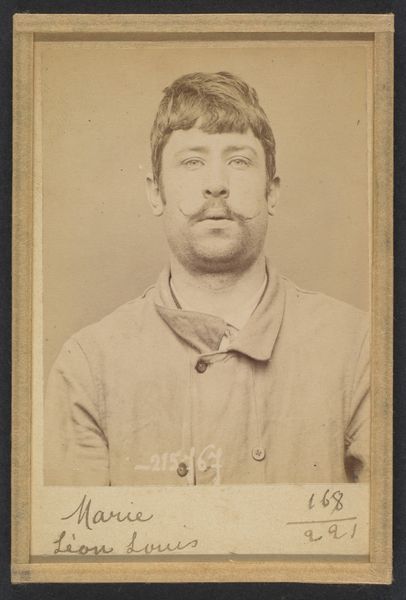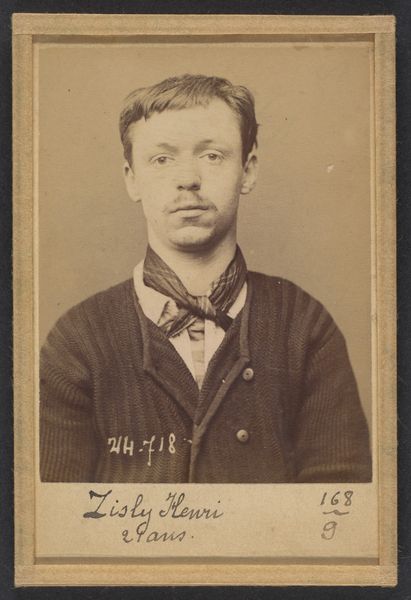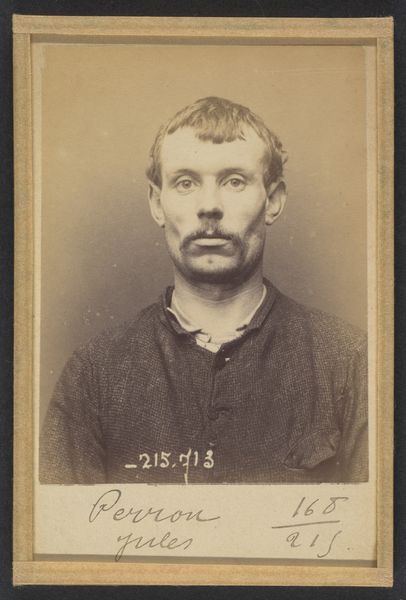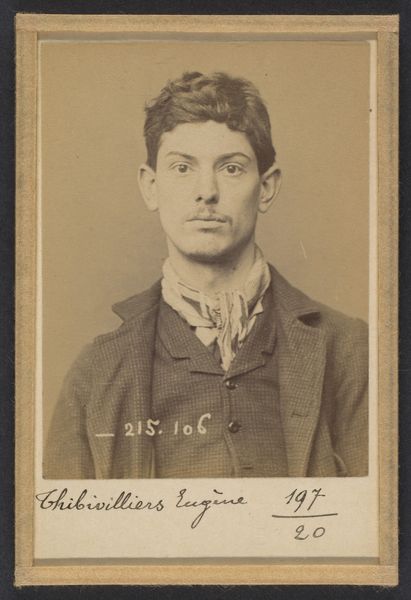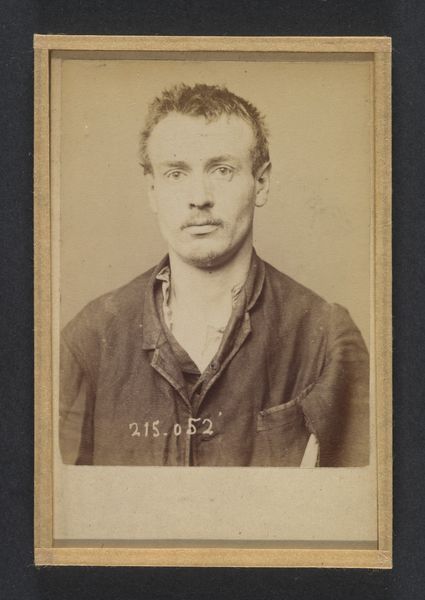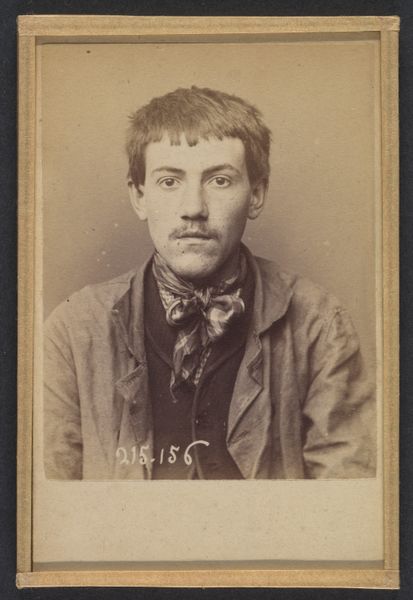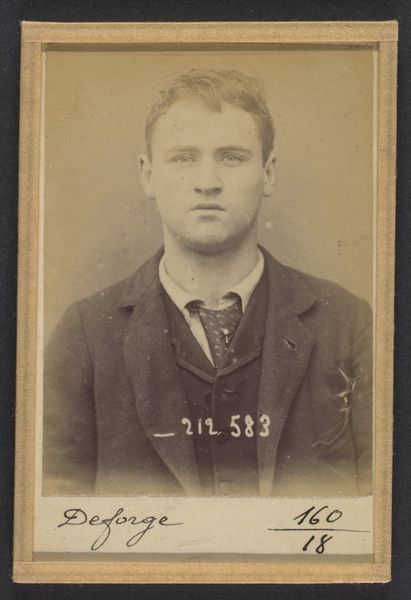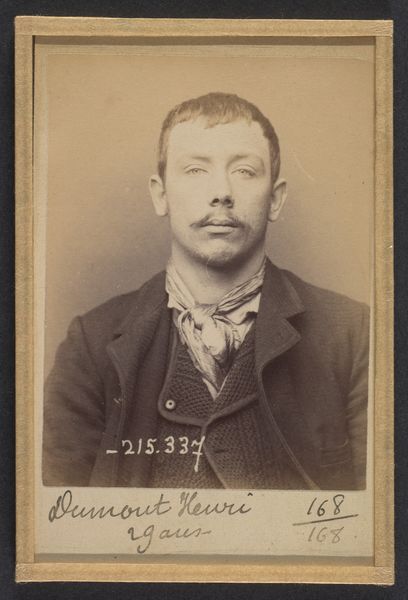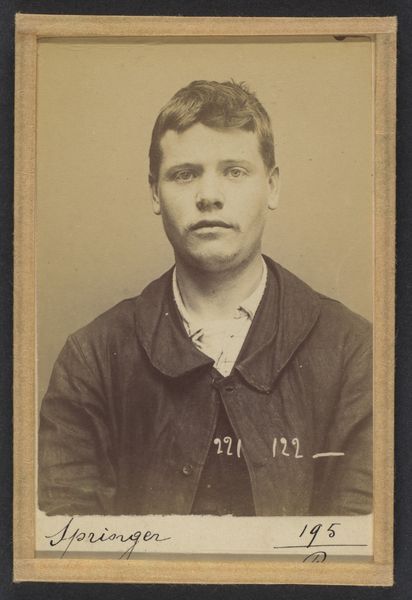
Hervy. Marcel, Noël. 19 ans, né à Paris XVIIIe. Raccommodeur de porcelaine. Anarchiste. 27/10/93. 1893
0:00
0:00
#
portrait
#
low key portrait
#
portrait image
#
portrait
#
portrait subject
#
film poster
#
portrait reference
#
men
#
portrait drawing
#
portrait art
#
fine art portrait
#
celebrity portrait
Dimensions: 10.5 x 7 x 0.5 cm (4 1/8 x 2 3/4 x 3/16 in.) each
Copyright: Public Domain
Curator: Let’s consider this photograph from 1893, “Hervy. Marcel, Noël. 19 ans, né à Paris XVIIIe. Raccommodeur de porcelaine. Anarchiste. 27/10/93.” It’s a portrait, seemingly straightforward, yet dense with implications. Editor: It strikes me as a very direct piece. The stark lighting almost feels forensic. A young man staring straight ahead; the details around him almost seem secondary to his expression. Curator: This piece exists as a product of Alphonse Bertillon’s police profiling system. What we see here is an early mugshot. It represents an intersection of nascent photography, burgeoning criminology, and deeply rooted social anxieties of Belle Époque Paris. The sitter, Marcel Hervy, is identified not only by name and age, but also by profession: a porcelain repairer, and political alignment: an anarchist. Editor: I immediately key in on his profession. The very act of "repairing porcelain" – such a delicate, precise craft - feels loaded. Juxtaposed against "anarchist," it creates a compelling tension between creation and destruction, between the established and the rebellious. Think of the labor, skill, the literal mending, the handwork implicit in this image. Curator: Exactly. His socio-economic placement cannot be divorced from his supposed deviancy. How are class, labor, and anarchism inextricably linked? Bertillon was attempting a “scientific” approach to criminality. But by pointing his camera towards individuals like Hervy, he was also perpetuating the criminalization of poverty. This piece raises crucial questions concerning the social construction of criminality. What and whose values do the authorities protect, and whose labor do they readily dismiss? Editor: Absolutely, we must examine the power structures in play, and the material conditions underlying criminality. Who benefits from the designation of “anarchist?” What conditions are people facing that might lead them to embrace a seemingly radical, certainly socially disruptive, politic? Curator: I see in Hervy’s face defiance but also the exhaustion of daily struggle, as evidenced by his mussed hair and clothes. These physical details of daily existence contribute so profoundly to how he is categorized. His perceived “otherness” wasn’t an inherent truth, but manufactured by prevailing political and social powers. Editor: Considering this, I see a study of a young man and his relation to physical labor and socio-political categorization. I will not be able to disassociate labor, material, and socio-political circumstances when discussing this from now on.
Comments
No comments
Be the first to comment and join the conversation on the ultimate creative platform.
